Understand your energy bill: we answer some of the most commonly asked questions
17 June 2022
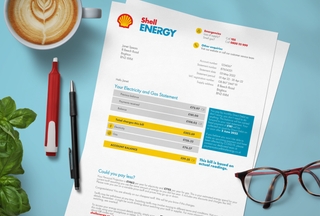
Got questions about your energy bill? Perhaps you don’t think you’ve used the amount quoted in your account statement, or are wondering if your balance is in debit or credit. Here’s how to get the information you need from your energy bill.
We know monthly energy bills contain a lot of information to digest (for the full list, check out this section-by-section breakdown). They’re also unlike most bills, in that the amount you’re asked to pay doesn’t always match the amount you’ve used that month.
It’s never been so important to stay on top of the key details of your energy account: how much you’re using, how and when you’re paying for it, and if your overall balance is on track.
To do this, you need to know how to navigate the information included in your bill. Here are answers to the most commonly asked questions about energy bills.
1. Meter readings: what do I need to understand?
If we haven’t had any meter readings from you, we estimate your readings based on your previous energy use. The meter readings on your bill will include a letter that shows where they’ve come from (you’ll find it under ‘Read type’).
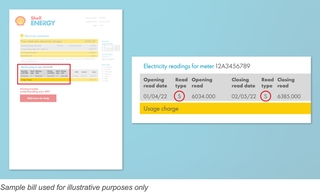
C is a reading from you, the customer
E is an estimate we’ve made
S is from a smart meter
If you see an ‘E’, it’s an estimate, and submitting a reading would give a more accurate picture of the energy you’ve used. Sharing regular meter readings will help you stay in control of your account - you can do this any time in My Account, or via our app.
The easiest way to keep your energy account up to date is to book a smart meter installation. Smart meters automatically send us your readings, so you don’t have to. It won’t cost you any extra and will show you exactly how much you’re spending in real time.
An impressive 85% of households with smart meters say it helped them change their day-to-day habits and reduce their energy use.
2. How do Direct Debit energy bills work?
Paying for your energy with a consistent monthly Direct Debit lets you spread the cost of your energy over the year. This can make it easier to budget. .
But it can be confusing when your monthly payment doesn’t reflect your energy use - say, in summer, when you’ve not had the heating on. But that’s usually perfectly normal.
This graph shows how we average out a year’s decreasing and increasing energy use for your monthly bill. To keep things simple, we’ve not included the energy price cap change that happens every three months.
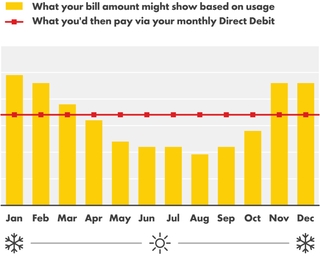
It’s then also worth remembering that your energy bill covers more than the units of energy you use. There’s also a standing charge for your electricity and gas. This is a daily charge that goes towards the cost of the pipes and wires that get the energy to your home. So, even if you don’t use any energy, your bill will include these charges.
3. What is the difference between credit and debit on energy bills?
If your bill shows a balance with a ‘CR’ next to it, you’re in credit and have paid for more energy than you’ve used. If winter’s on the way, you’ll be in a better position to handle the bigger bills to come.
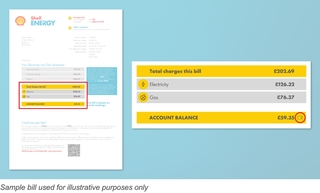
If you don’t see ‘CR’ next to your balance, it means you’re in debit. A small amount of debit is normal in colder months, but this can build up faster if the cost of that energy has risen (if you’re on a flexible tariff, or your fixed tariff has ended), or you’ve used more energy than expected (which can happen for both flexible and fixed tariff customers). Either way, your monthly payments need to keep in step with these changes.
Changes in the cost of energy for flexible tariffs happen twice a year when Ofgem, the UK’s energy regulator, decides the price cap – the maximum UK consumers can pay for a unit of energy and standing charge.
4. Am I calculating the energy use right?
If you pay for your energy by monthly Direct Debit, it’s important that these payments will cover your energy use for the whole year. We’ll check your account every three to six months to make sure your balance is in good shape - and will let you know if any adjustments are needed to your Direct Debit amount.
It also helps to understand your energy use, so you can spot any changes. Your bill’s ‘About your usage’ section shows how much energy you’ve used alongside the amount you were using a year ago. Notice any big changes? Ask us if your Direct Debit needs to adjust accordingly.
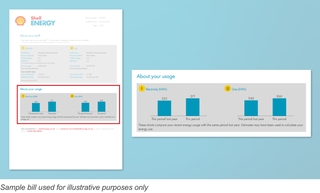
You can change your Direct Debit amount any time you like in your online account, on the Shell Energy app - or over the phone.
5. What does kWh mean?
We bill you for each kilowatt hour of electricity you use. It’s a standard measurement, based on 1,000 watts of electricity used over a period of one hour.
The term for 1,000 watts is a kilowatt - abbreviated to kW - so a kilowatt hour is abbreviated to kWh.
6. Why is this final energy bill too high?
Even if you know your regular energy bill inside and out, your final bill - which you get when you’re leaving us, or have moved house - will be a little different.
It can arrive later than you expect, because we’ll be closing your account at the same time. And when it does, you may notice it’s for a different amount. If you’re trying to figure out why, two sections of your bill usually contain the answers.
First, the bill may cover more than the usual month of energy use. Check the dates in the ‘Statement period’ line at the top of your bill to see.
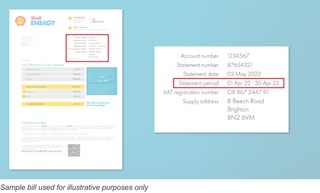
The other thing to check is your account balance. If you’re in credit, you’ll end up paying less - or we’ll refund you anything we owe. If your account balance is in debit, you’ll have to pay that amount in full.
7. What if I can’t pay my bill?
With the cost of energy at an all-time high, we know more people are struggling to pay their bills. If that’s you, the best thing to do is get in touch with us. There are many ways we can help, but to find the right solution, we’ll need to know more about your situation.
We can arrange payment holidays, make temporary changes to how you pay, or set up payment plans.
For a deeper dive into your energy bill, you can explore a section-by section explanation in our Help pages.